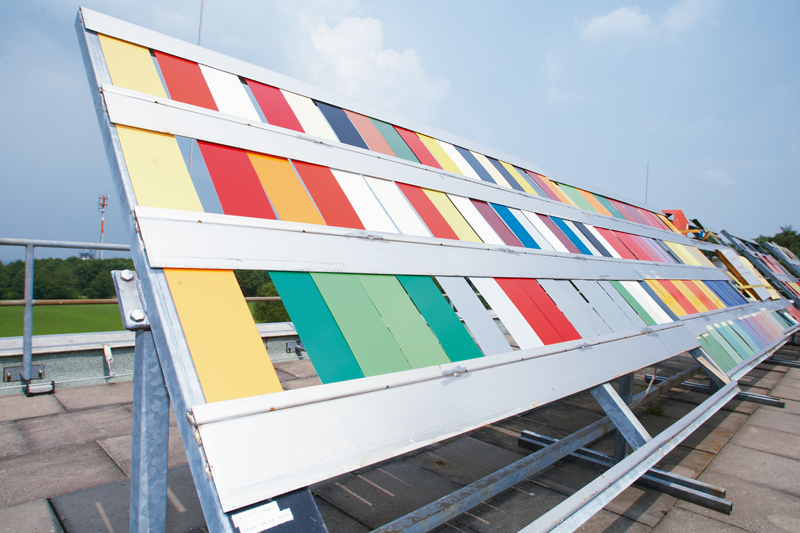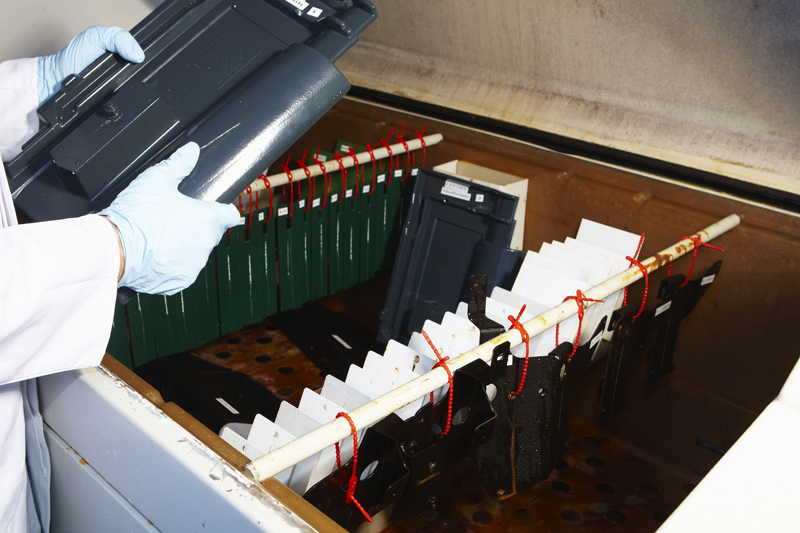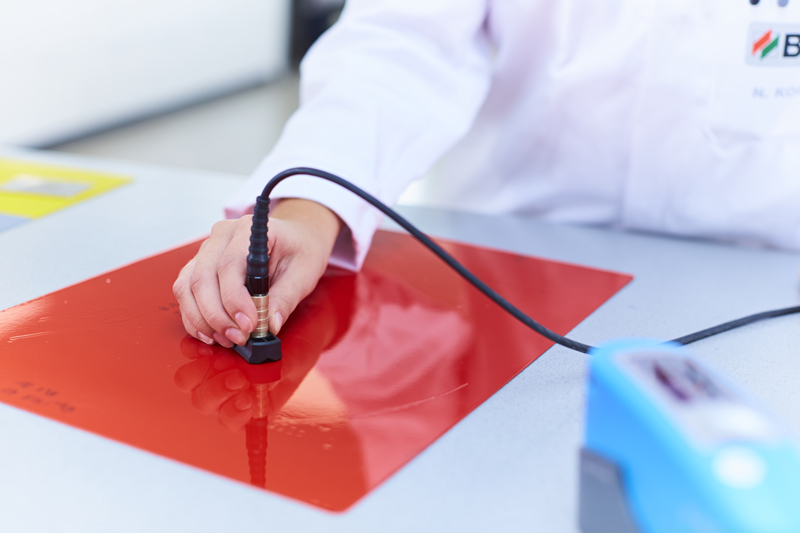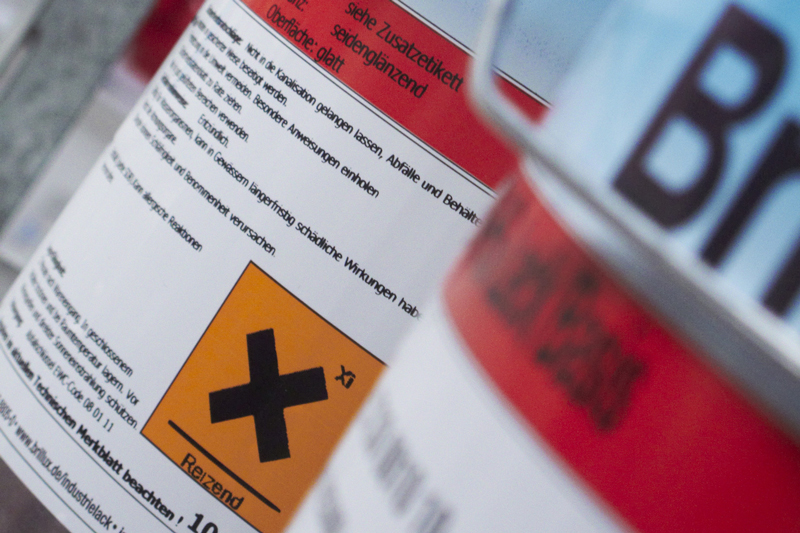The most important regulations and directives Laws and norms
There are a number of regulations and standards for industrial coatings. They regulate the use of certain substances, specify limit values and describe occupational safety measures. We have compiled the relevant regulations and specifications here.
DIN standards
Standardized test methods for coatings
For coatings, there are numerous standardized test methods for determining various properties, which can be divided into different groups:
- chemical coating test
- chemical resistance
- electrical coating test
- mechanical check
- spectroscopic coating testing
- topological coating testing
- UV weathering
| Taber abraser | DIN ISO 15082 |

| Natural weathering test | DIN EN ISO 2810 |
| Climatic change test, condensation water test | DIN EN ISO 6270-2, DIN 50018, DIN EN ISO 3231 |
| Climatic change test (blistering of paint layers) | ASTM Methode D-2247-2015 |
| Sun test | DIN EN ISO 16474-2 |
| Light and weather fastness | DIN EN 20105, DIN EN ISO 105 |
| Weather resistance | DIN EN ISO 16474-1 |
| Xenon test | DIN EN ISO 16474-2 |
| Buchholz hardness test (indentation resistance) | DIN EN ISO 2815 |
| Pendulum hardness | DIN EN ISO 1522 |
Regulations and directives
ATEX directives
Minimum requirements for explosion protection
The term ATEX, which stands for the French abbreviation “Atmosphère explosible”, refers to the two European Community directives on explosion protection. While the ATEX Directive 94/9/EC sets out requirements for equipment and protective systems intended for use in potentially explosive atmospheres, the ATEX Directive 1999/92/EC defines minimum requirements for the health and safety of workers potentially at risk from explosive atmospheres.
Operational safety
Safety and health protection in providing work equipment
The German Industrial Safety Regulation, referred to as BetrSichV, specifies what must be observed when an employer provides work equipment and what employees need to consider in their use. The regulation describes a protective concept that can apply to all hazards relating to work equipment.
Ordinance on the prohibition chemicals
Restricts or bans particular hazardous substances
The ordinance on the prohibition of chemicals came into effect in 1993. It defines the bans and restrictions on marketing hazardous substances in general and especially dangerous substances such as asbestos, formaldehyde, dioxins, furans, benzene, aromatic amines, arsenic, mercury and cadmium compounds, polychlorinated biphenyls and polychlorinated terphenyls, pentachlorophenols, vinyl chloride, aliphatic hydrocarbons or tar oils.
Ordinance on hazardous substances
Protection against hazardous substances
The German Hazardous Substances Ordinance (GefStoffV) serves primarily to transpose EC Directive 98/24/EC into German law. The aim of the Hazardous Substances Ordinance, which is anchored in the Chemicals Act and the Occupational Health and Safety Act, is to protect people and the environment from harmful effects.








